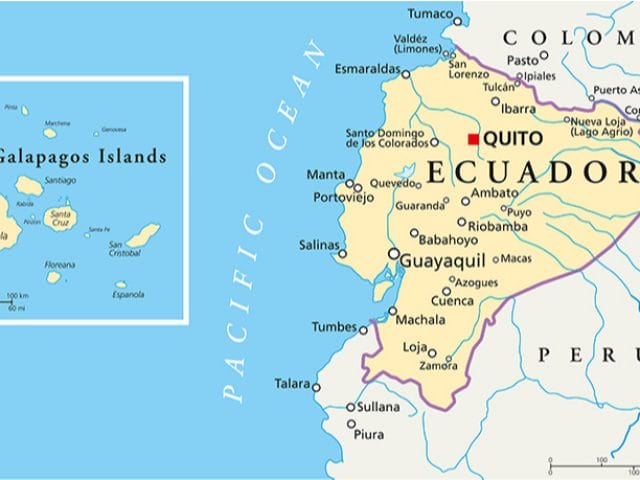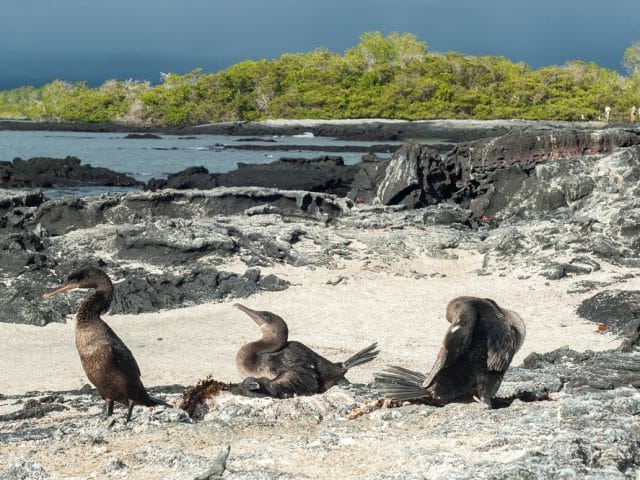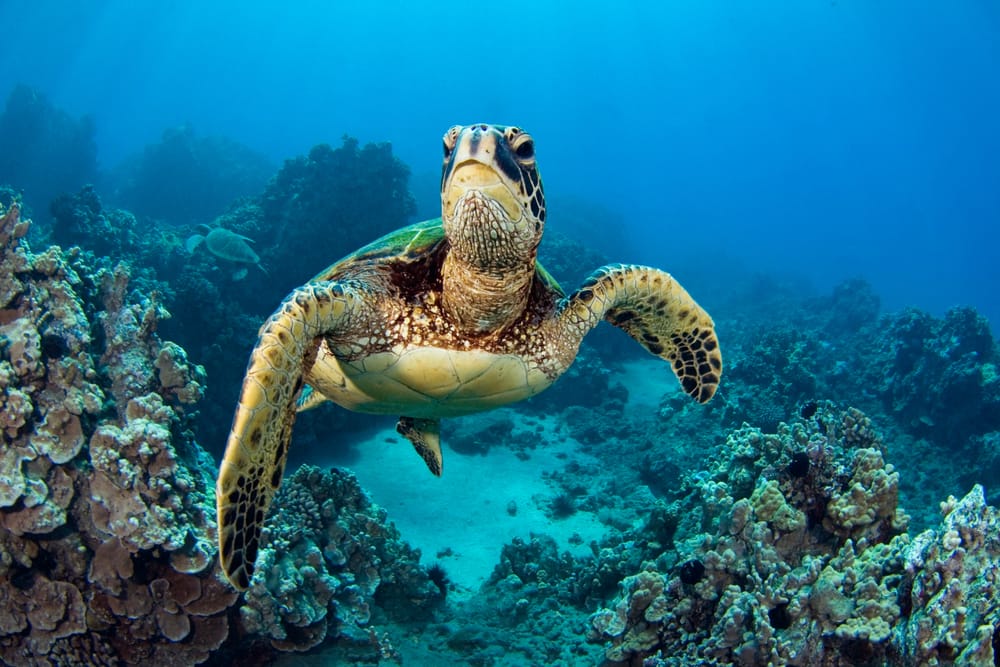
Lying roughly 600 miles off the coast of Ecuador, the Galapagos Islands are one of the remotest places to visit in the world. As a result of this distancing, much of the Galapagos wildlife cannot be found anywhere else on our planet. Endemic species such as the Giant tortoises, Galapagos Penguin, and Galapagos pink iguana have been separated from the mainland. This separation has gone on for millions of years, allowing them to evolve into separate species. As a result, the island chain has become a bucket list location for wildlife tourists. Many hopeful (if not desperate) to spot some of the incredible species. In this article, we’ll meet some of the most charismatic of the archipelago’s wildlife you will find on your Galapagos holiday.
Galapagos Wildlife
Galapagos Giant Tortoise

The most famous resident of the Galapagos Islands, the giant tortoise is top of most people’s must-see list when visiting the archipelago. The largest tortoises in the world, as well as the longest living land animal on the planet, Galapagos tortoises can live to be over 100 years old. Most islands have their own individual sub-species. Some, such as the Pinta Island tortoise have sadly gone extinct over the years. Lonesome George was the last Pinta Island tortoise. His death in 2012 is strongly believed to have signaled the end of the Pinta Island species. However, thanks to a dedicated conservation effort, 11 of the original 15 species of Galapagos tortoise continue to survive today, with a total population of around 15,000 tortoises spread across the islands.
Galapagos Penguin

The Galapagos penguin holds the unique accolade of being the only species of penguin to live north of the equator and a must-see species for travelers on a Galapagos holiday. The species is one of the smallest in the world and lives mainly in caves on the islands, carved by lava during the Galapagos’ volcanic past. Galapagos penguins mate for life and nest on the shoreline, where they’ll raise a single chick each year. Unfortunately, the penguin is an endangered species, with just 2,000 individuals surviving in the face of a rapidly warming climate. The penguin is also susceptible to bycatch fishing. If you’re with this term it means unintentional catching by fishermen. In addition, introduced predators such as cats can kill the birds. Luckily, a dedicated conservation effort is working to preserve this incredible species. This is particularly noticeable on the islands of Isabela, Fernandina, Floreana, and Santiago.
Marine Iguana

Iguanas are a relatively common species. Typically inhabiting tropical forests across Central and South America, Mexico, and the Caribbean. However, as is the case for many of the Galapagos’ species, the iguanas found in the archipelago are a little different. Marine iguanas have adapted over the centuries to make use of the ocean, a resource-rich in food such as algae. Generation after generation has perfected the art of diving underwater and can reach depths of up to 30 feet. They are the only marine lizard to be found anywhere on the planet and can be spotted across the Galapagos Islands. These sightings usually occur as they taking to the water or basking on the rocky shoreline, absorbing precious heat from the sun. Unlike other iguana species, the Galapagos marine iguana also likes to hang out in groups, rather than its cousins, which lead solitary lives.
Flightless Cormorant

Like the Marine iguana, the Flightless Cormorant is a relatively common species, which has adapted over thousands of years. For the cormorant, the big change is that it has lost the ability to fly. With no natural predators on the islands, the cormorant simply had no need to fly and resorted to jumping along the coastline. Hence, they dive off the rocks to hunt octopuses and eel at the bottom of the ocean. These unique birds can be spotted on the islands of Isabela and Fernandina. The mating ritual takes place between May and October when the birds build large nests just above the high watermark. Flightless cormorants are unaware of the risk of humans and do not fear people at all. Meaning they will not run when travelers come close. As a precautionary measure, human interaction is managed by guides on the islands to avoid disturbing the birds.
Darwin’s Finches

No guide to Galapagos wildlife would be complete without mentioning Darwin’s finches. The name refers to a group of around 18 species of finch, all but one of which are endemic to the Galapagos Islands. It is this group of birds that legendary naturalist Charles Darwin studied when forming his ground-breaking theory of evolution. He discovered that some of the finches had different beaks to the others. Consequently, this variance better suited the conditions of the islands where the finches were found. Meaning the birds had changed their characteristics to suit their environment. One might surmise is the evolution in a nutshell. The finches are mostly small and dull-colored. Nonetheless, they are an exciting species to spot on the islands, simply due to their important role in the history of science.
Galapagos Wildlife Wrap Up
The main part of any Galapagos holiday is the wildlife. Incredible species found nowhere else on Earth make the archipelago one of the world’s top destinations. The best way to visit the Galapagos is to take an island-hopping cruise, visiting all the different islands of the chain and staying in a comfortable boat out on the water, surrounded by a plethora of rich marine life. Tell Darwin we said hello!
